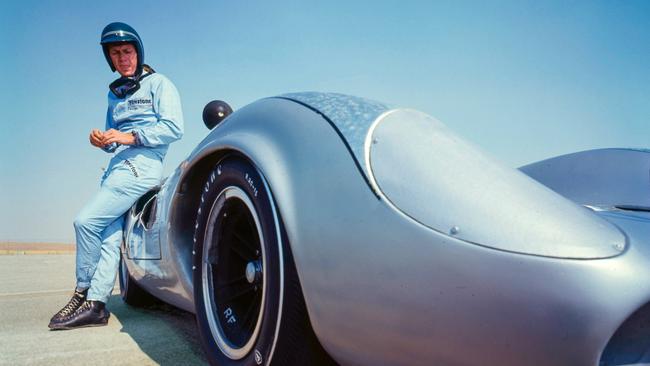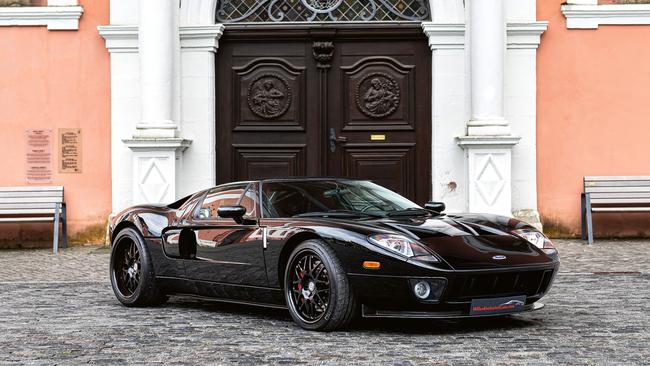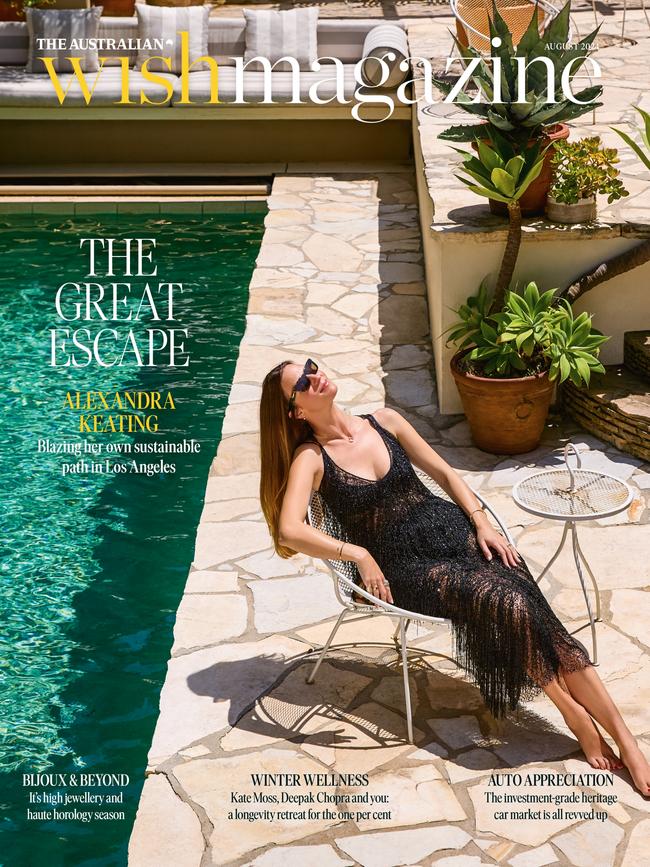The classic car market is booming in Australia
The investment-grade heritage vehicle market is all revved up. Our motoring expert gets up to speed.

If you’re looking to spend your money on something you really want, but don’t actually need – like an expensive yet undeniably beautiful car – it’s a good idea to confuse and confound the issue by giving your expenditure a credible-sounding title. Something along the lines of “automobile heritage enhancement”, which sounds like someone trying to spin the idea of investing heavily in classic cars, because that’s exactly what it is.
That doesn’t mean it’s not a genuine investment opportunity, of course, more that it’s the kind of opportunity that sounds like a frivolous folly. (To be fair, buying Tesla shares probably felt like that at one point.)
It turns out Automobile Heritage Enhancement is actually an evergreen fund from Italian investment firm Azimut, which is investing in classic cars in the same way others invest in art, wine or other appreciating assets.
Obviously, the idea of buying Ferraris, Maseratis and Alfa Romeos (Azimut’s focus is the Italian classics) is appealing to many enthusiasts, but as you’d expect from an investment firm, this isn’t done for fun, or to appreciate beauty in design; it’s to make a profit. Azimut believes the global market for what it calls “investment-grade” cars totals more than €200 billion ($320 billion) and provides more attractive returns, and less volatility, than either gold or artworks.

The legendary Ferrari 250 GTO is a powerful example of what’s possible. This Italian beauty sold for just US$18,500 ($27,450) when new back in 1962, yet in 2018 one changed hands for a staggering US$70 million in a private sale. That’s believed to be the most expensive example ever, but recent sales of other 250 GTOs have also exceeded US$30 million.
In 2022 Mercedes-Benz finally agreed to sell one of its two 1955 300 SLR Uhlenhaut Coupés after decades of begging from collectors. In a private auction, this automotive equivalent of the Mona Lisa went for US$143 million, making it the most expensive motor vehicle ever sold.
All this, of course, is at the very top end of the market and out of the reach of anyone but the wealthiest investors and collectors. However, there’s a huge industry below this level that allows those with the resources to invest in a potentially appreciating asset, while also having an investment they can appreciate.
The Australian classic car market boomed in recent years, thanks to a combination of covid and the end of the local car manufacturing industry. The pandemic put a halt on many ways that people enjoyed spending their money, but buying cars over the internet was attractive and easy, and the prices of certain vehicles skyrocketed, particularly cars that provided a sense of nostalgia and the temptation of post-pandemic adventure, such as Volkswagen Beetles and Kombis.
The market for Australian-made cars also surged. In the same way an artist’s work increases in value once they pass away, so too did the death of Holden send collectors rushing into the market to buy what was now a piece of history, rather than just a car.

It was in this environment that Lex Pedersen, founder of online retailer SurfStitch, saw an opportunity to create a new business born of his passion for cars. Having seen his fortune rise and fall with SurfStitch, Pedersen noticed his personal collection of classic and supercars had only appreciated, and appreciably so.
In early 2021 he founded Chrome Temple, a multifaceted business that runs an investment fund, dubbed Mach 1. While it offers its services to help collectors buy and enjoy driving their own special cars, the Mach 1 Fund is strictly for investments and the cars it owns are not to be driven, which ensures they retain maximum value.
“Traditionally, in the past, I often looked at investments as you either pay the price financially or emotionally,” Pedersen explains.
“You got emotional uplift from a supercar, but you had to pay the price through steep depreciation. And you know what? Most people were comfortable with that, it was the price you paid for the enjoyment.
“But now, we’re in this rare time when you can have both. Now you can have an appreciating asset and you can still derive a lot of emotional uplift on your own, or with a community of like-minded folk.”
The key turning point for this new age of investment, according to Pedersen, has been the decline of the internal-combustion engine and the rise of electric vehicles. European emissions laws are getting increasingly strict, forcing even the likes of Ferrari and Porsche to build more fuel-efficient cars. As traditional petrol-powered supercars begin to be fitted with hybrid engines and future models look likely to become fully electric, the value of the final combustion-powered examples has increased.
Chrome Temple claims its Mach 1 Fund has been outperforming conventional investments, including gold, the FTSE 100, S&P 500 and the NASDAQ, since it began operating in May 2021.
“That was part of the impetus that got us going some years ago, looking to the horizon [of the car industry],” Pedersen says. “Being an enthusiast and collector myself already but looking at what was happening with European emissions laws, that really was the catalyst that changed that dynamic.

“What really drove depreciation in the past was there’s always going be a better [model]. So the sizzle came out of it because the next one’s not going to be better. All of a sudden, these ‘last of the line’ cars were going to be the best of the best.”
Yet another good example from Ferrari is the 458 Italia, which is the last naturally aspirated V8 from the famed Italian brand and therefore has the potential to be an appreciating asset, and a relatively safe investment (as well as being a thing of beauty).
“You can no longer have these,” Pedersen says. “And there’s no better way to drive the value in something that’s truly scarce than to tell someone they can’t have it.”
So, what are the best cars in which to invest? Well, the blue-chip cars are the two most famous names in the industry – Ferrari and Porsche. The Italian and German brands, respectively, have enjoyed the most growth and stability, helped by the evocative image that surrounds both, not to mention the plethora of low-volume sports cars they have produced over the decades.
Like any resource, value is linked to scarcity, so particularly rare models will generally fare better over the long run. McLaren famously struggled to sell its original supercar, the grandly named F1, and only made 106 examples. It is now one of the most highly prized cars in the collecting world, because there are so few. They now routinely change hands for more than US$15 million.
It doesn’t even matter about the history of the car, as Mr Bean himself, actor Rowan Atkinson, proved. The hilarious motoring enthusiast owned an F1 and crashed it twice, yet still managed to sell it for US$12.2 million in 2015.
Of course, like any investment, cars can ebb and flow depending on outside factors. Specifically, the biggest factor in prices will be the age of the key buying demographic. While there will be outliers, typically the majority of the market will be aged 40 or older, as this generation has the disposable income to invest in cars.
Generally speaking, buyers tend to aspire to own the cars that first sparked their love of motoring, so at any given time the industry will centre on classic vehicles that are 30 to 40 years old.
Because of this, some industry experts suggest the next wave of cars that will fetch top dollar will be Japanese performance cars made famous in the 1990s and early 2000s, through both motor racing and The Fast and The Furious films.

Models such as the Nissan Skyline GT-R, Honda NSX and Mazda RX-7 have all been steadily increasing in price in recent years as the generation that lusted after them as teenagers becomes successful and cashed up.
On the other side of the industry sits Collecting Cars, a relative newcomer to the Australian market that doesn’t recommend buying a car as an investment but rather insists it should be seen only as something to enjoy.
Lee Hallett, head of Asia-Pacific for Collecting Cars, said the company’s focus is making sure the cars it sells are “driven, not hidden”.
The company, co-founded by former Top Gear presenter Chris Harris, actively engages with the classic-car community to get its cars out on the road. Its first Coffee Run event, held in Sydney in February this year, attracted more than 2500 cars.
Hallett does see trends in the market in terms of what cars are in demand and what sectors of the market are softening.
“There’s definitely a market for classic cars as the world transitions, or semi- transitions, to electric vehicles,” Hallett says. “I think there’s definitely been more of a swing towards [classic] petrol cars.
“I think people are certainly looking back to the ’70s, ’80s and ’90s – those sports cars are really, really popular at the moment.”
And that is the key for enthusiasts – rather than entrepreneurs – investing in cars: pick something that’s special to you. It’s impossible to predict any investment market with absolute certainty, but if you invest in a car you love and appreciate the time you have with it, you can’t lose.
That’s because, even with fluctuating markets you can still enjoy and appreciate a classic car far more than shares on a screen, gold in the bank or art on the wall. A classic car is something you can touch, feel, drive and enjoy.
So, even if you lose, you still win.

This story is from the August issue of WISH.




To join the conversation, please log in. Don't have an account? Register
Join the conversation, you are commenting as Logout